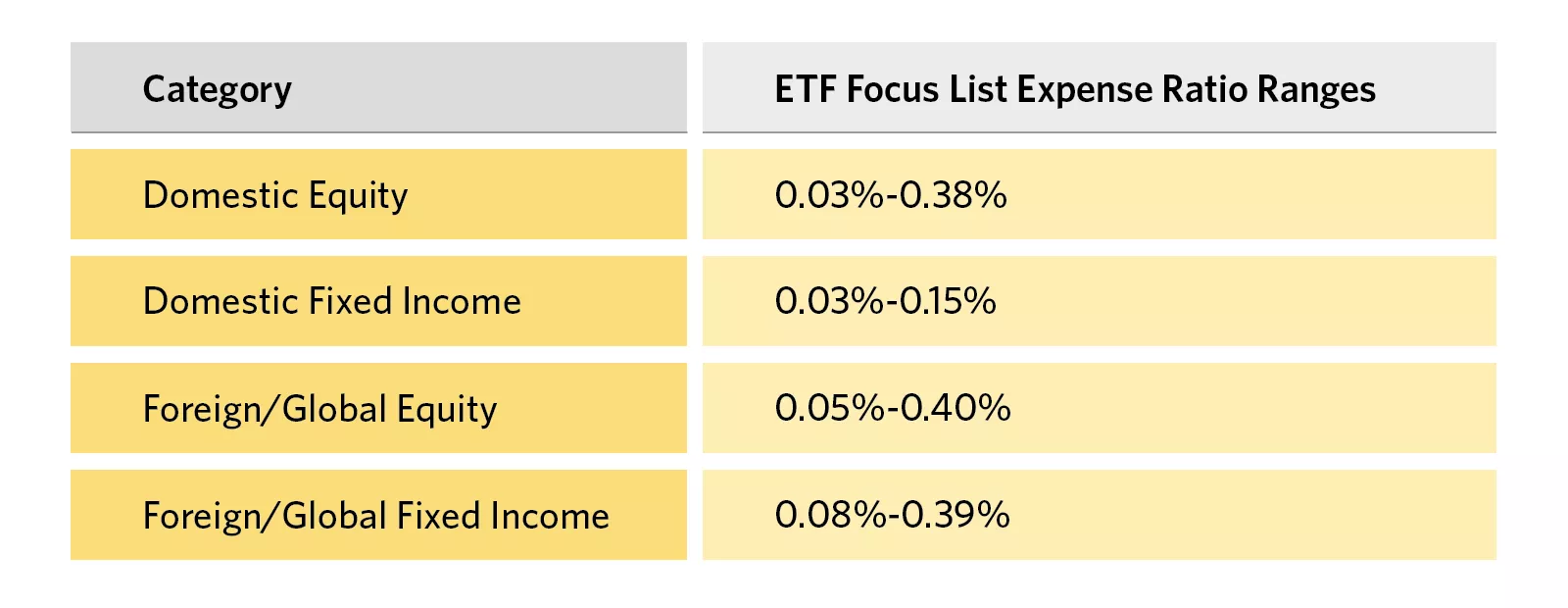What is an ETF?
What is an ETF?
An exchange-traded fund (ETF) holds a variety of securities in one category or class. Most ETFs are passively managed, meaning they are designed to track the performance of a particular index.
What is an index?
An index is made of a big cross-section of stocks or bonds, and bigger indexes are commonly used as benchmarks for the overall stock market.
ETFs allow you to invest in a broad segment of a market, like the S&P 500 or the Dow, or in the market as a whole.
Because they are designed to mimic an index, passively managed ETFs offer potentially lower expenses and greater tax efficiency.
If you want the chance to outperform an index, you might want to look into actively managed mutual funds.
Are ETFs right for me?
ETFs may be appropriate for many kinds of investors, especially the traditional, more broadly diversified and passively managed ETFs that provide exposure to multiple securities and sectors.
Your local Edward Jones financial advisor is ready to help you determine if ETFs are right for you.
Investing in ETFs involves risk. Your principal and investment return will fluctuate in value. Your investment, when redeemed, may be worth more or less than the original cost.
ETFs are offered by prospectus. You should consider the investment objectives, risks, and charges and expenses carefully before investing. The prospectus contains this andother information. Your Edward Jones financial advisor can provide a prospectus, which you should read carefully before investing.

